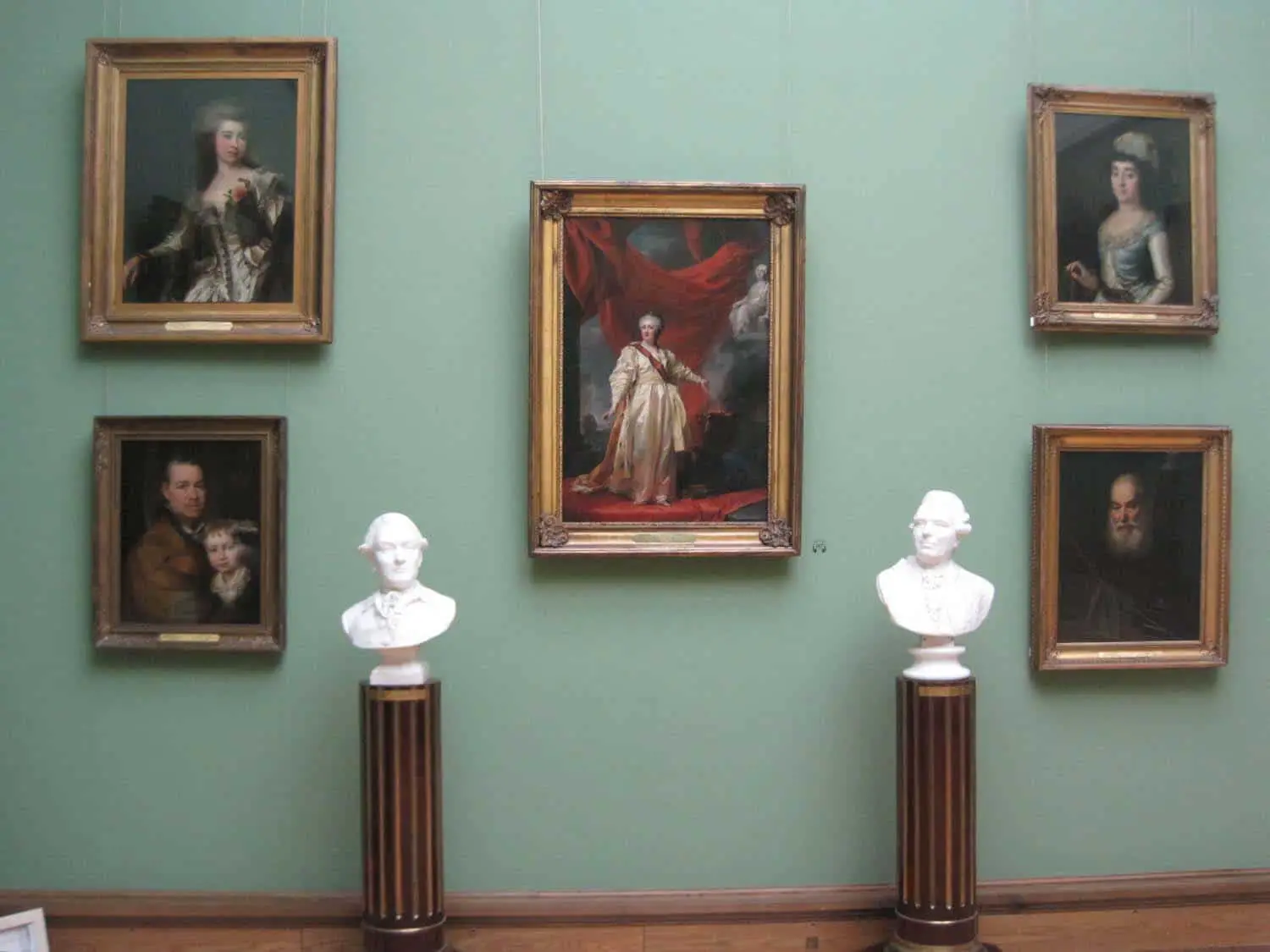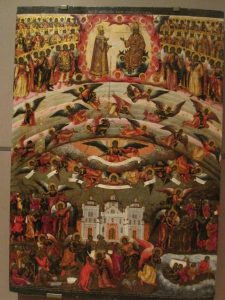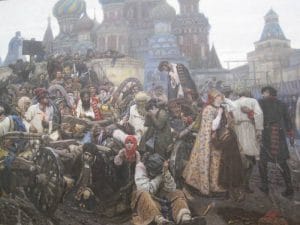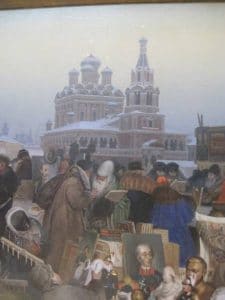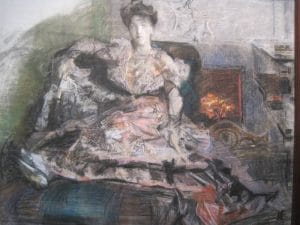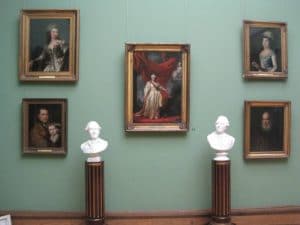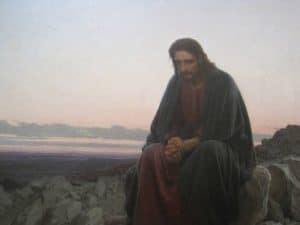The Tretyakov Art Museum in Moscow houses an extensive and significant collection of Russian fine art, showcasing masterpieces from the 11th to the 20th centuries. The museum provides a deep dive into Russian culture and history through its vast array of paintings, icons, and sculptures, including works by renowned artists like Andrei Rublev, Ilya Repin, and Kazimir Malevich. Located in central Moscow just a short walk from a Metro stop of the same name, the Tretyakov should be at the top of any bucket list of things to see in the Russian capital.
Tretyakov Gallery: Moscow’s Epicenter of Art
By Sarah Parker
The Tretyakov Art Gallery was given to the city of Moscow in 1891, when Pavel M. Tretyakov donated his private gallery for public use. It is a comprehensive collection of Russian artwork.
Tretyakov is the home of many of Russia’s most famous paintings that we normally see on tourist merchandise. The museum is huge, and you should plan to spend a couple of hours (if you’re fast!) The museum is very patron friendly; many of the rooms have groups of cushioned seats for you to view the paintings from a comfortable distance and soak in the experience. Audio guides are available, but a great feature of this gallery is that they provide large laminated cards in each room, that give the history of the artist, and explain some of the context of the paintings. I really appreciated this, because I could read about specific paintings, and focus on the artists I really loved, namely the classicist Kramskoy, the impressionist Vrubel, and the artist (and critic of war) Vereshchagin. (Examples below.)
The patron, Tretyakov, had a passion for portraiture, and you will see it in the first several rooms. These rooms have unique and interesting depictions of Tsars and other interesting people from Russian history, as well as some portraits of unknowns.
What is especially important about this museum is the distinctively Russian feeling of the artwork, though there are some pieces by foreign artists. More than in Western museums, you will see Russian landmarks, famous cities of Russia, and events in Russian history depicted in these paintings. Themes of beauty, imperial wealth, war, serfdom, and peasantry are all on display, and explored through the various styles of the decades. There is plenty of Russian Romanticism on display, and a fair amount of Impressionism too.
Tretyakov was particularly interested in art regarding nature, and you will notice many pieces that reflect his personal tastes. This art reflects the diverse natural environment of Russia, with evergreen forests, marshlands, and snowscapes, seas and storms.
The lower level (level 1) also shows religious Russian art, some dating back to the 12th century. They also have gallery space for special exhibitions.
If you can only go to one museum on your stay in Moscow, it should be the Tretyakov. It has the quality, the space, and the elegance of the Hermitage, but with a distinctly Russian feel to the art.
10 Must-See Masterpieces at the Tretyakov Gallery
Originally posted in Russian at AdMe.ru. Translated to English by SRAS intern Sophia Rehm.
The Tretyakov in Moscow is one of Russia’s – and the world’s – foremost art galleries. Founded by Russian tsarist-era industrialist and entrepreneur Pavel Tretyakov, the museum now displays some of staples of Russian and Soviet classic art.
The Apotheosis of War
by Vasily Vereshchagin
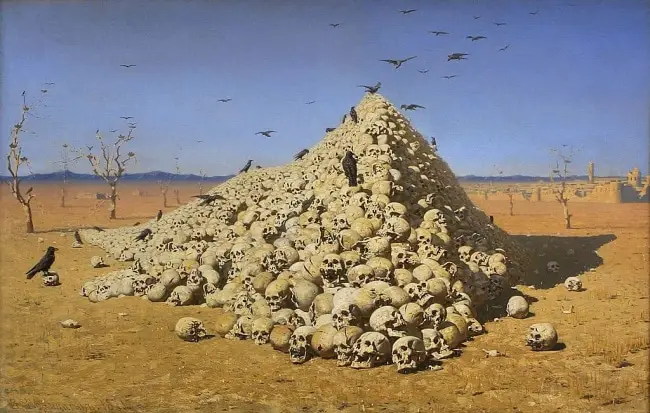
This work was painted in 1871, and was influenced by Russia’s military operations in Turkestan, which were striking to witnesses for their brutality. The painting was initially called The Triumph of Tamerlane, after the ruler (also known as Timur) whose troops left behind pyramids of sculls. According to the story, the women of Baghdad and Damascus once complained to Tamerlane that their husbands were mired in sin and debauchery. The cruel commander ordered every soldier in his 200,000-strong army to bring him the severed head of one of these lecherous husbands. Once the order was carried out, seven pyramids were made from the heads.
The artist later decided to give broader meaning to the painting. Vereshchagin wrote “The Apotheosis of War” on the frame, and added: “Dedicated to all the great conquerors, past, present and future.”
The Unequal Marriage
by Vasily Pukirev
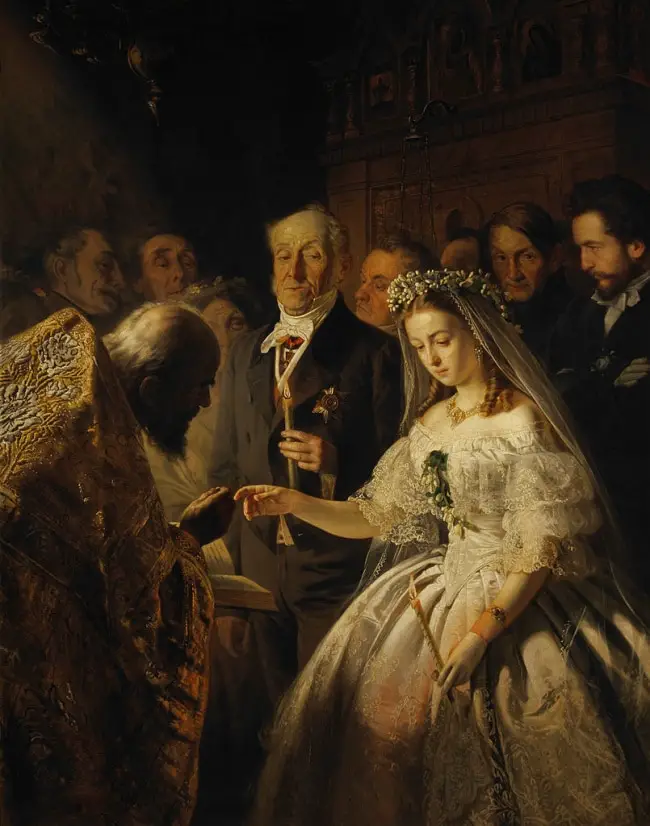
This painting depicts a wedding ceremony in an Orthodox church. The young, dowerless bride is marrying an old official against her will. According to one theory, the painting depicts the artist’s own romantic drama. Vasily Pukirev’s former bride-to-be served as the prototype for the image of the bride. Also, the image of the best man, shown behind the bride at the edge of the painting, with his arms across his chest, portrays the artist himself.
Boyarynya Morozova
by Vasily Surikov

This giant painting (10 ft. by 20 ft.) by Vasily Surikov depicts a scene from the history of the 17th century schism of the Russian Orthodox Church. The painting is dedicated to Feodosia Prokopiyevna Morozova, an associate of archpriest Avvakum, who was a spiritual leader of the Old Believers. Around 1670 she secretly became a nun, in 1671 she was arrested, and in 1673 she was sent to the Pafnutevo-Borovski Monastery, where she was starved to death in an earthen prison.
The painting depicts an episode when the boyarynya (boyar’s wife) Morozova is transported through Moscow to the place of captivity. Next to Morozova is her sister Yevdokiya Urusova, who shared the dissenter’s fate; in the background is a pilgrim, in whose face the artist’s features can be found.
Unexpected Return
by Ilya Repin
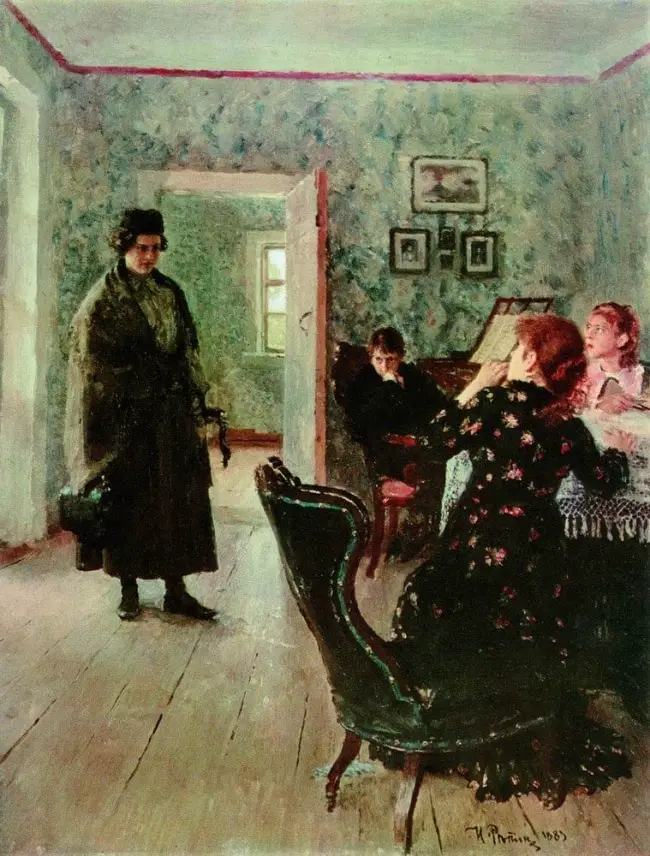
There are two versions of the painting Unexpected Return. The first of them was begun in 1888, and it depicted a student returning to her family. This version was painted in oil on wood.
The second painting, painted in 1884-1888, depicts the moment of the unexpected return home of a political exile. The little boy and the woman at the piano (seemingly his wife) are delighted; the little girl looks at him warily; the chambermaid is incredulous; and in the foreground, the hunched figure of his mother conveys deep emotional shock.
Today, both paintings belong to the Tretyakov Gallery’s collection.
Note that the title of the work is sometimes translated as An Unexpected Visitor or as They Did Not Expect Him. We have used the translation used by the Tretyakov Gallery here.
Trinity
by Andrei Rublev
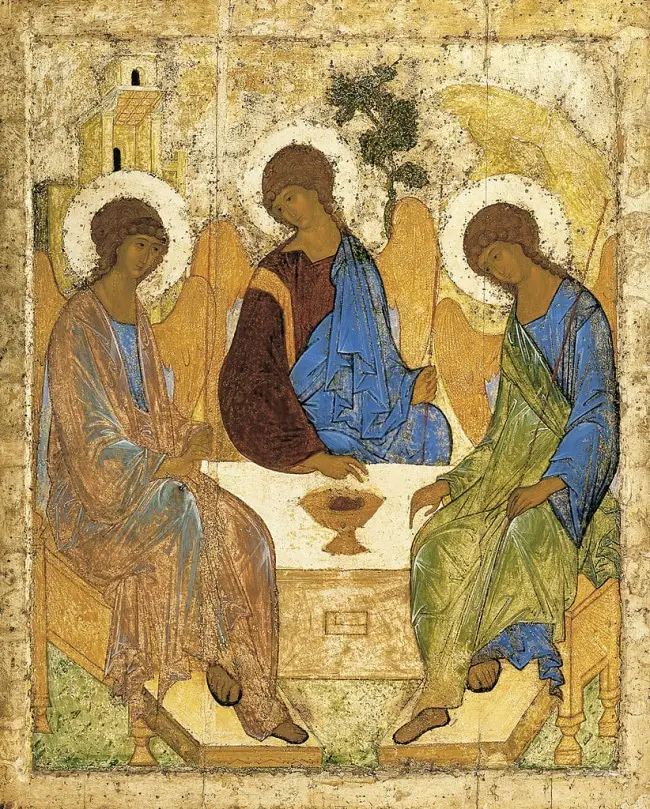
The Tretyakov Gallery has a rich collection of Old Russian paintings of the 11th-17th centuries, including the works of Dionisius, Simon Ushakov, and Andrei Rublev. In the Tretyakov’s Exhibition Hall 60 hangs one of the most famous and celebrated icons in the world: Trinity, painted by Andrei Rublev in the first quarter of the 15th century. Three angels are gathered around a table for a quiet, unhurried conversation. On the table sits a sacrificial bowl.
Trinity is kept in Tretyakov’s Hall of Old Russian Art, in a special glass enclosure, which maintains constant temperature and humidity and protects the icon from any damage.
Portrait of an Unknown Woman
by Ivan Kramskoi
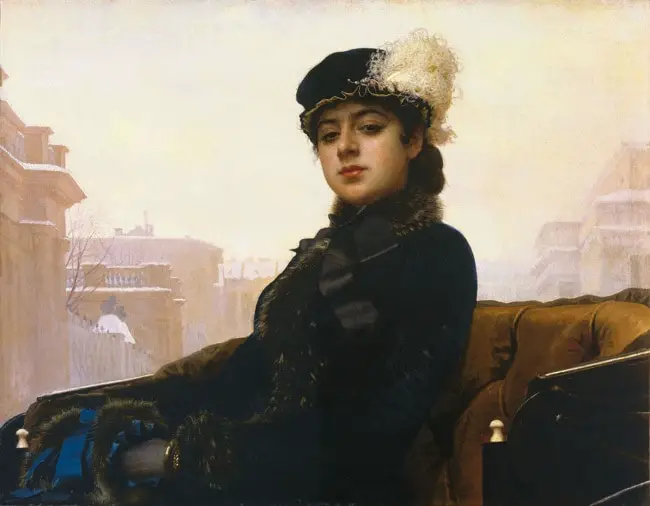
There is no doubt as to this painting’s setting: St. Petersburg’s Nevsky Prospekt, specifically the Anichkov Bridge. But the image of the woman still remains the artist’s secret. Kramskoi left no references to the identity of the unknown woman in letters or journals. Critics have associated the image with Lev Tolstoy’s Anna Karenina, Fyodor Dostoyevsky’s Nastasya Filipovna, and other famous women. There is also a theory that the painting depicts the artist’s daughter, Sophia Ivanovna Kramskaya.
In Soviet times, Kramskoi’s Portrait of an Unknown Woman became practically a Russian Sistine Madonna – the ideal embodiment of unearthly beauty and spirituality. It hung in every respectable Soviet home.
Beauty
by Boris Kustodiev

The artist’s son recalls how Kustodiev painted one of his most famous paintings: “He worked on the painting every day, beginning at six or seven o’clock in the morning and working all day. The painting was based on a drawing done in pencil and red chalk, from life (the model was an actress from the Moscow Art Theater). The down blanket, which my mother gave my father for his birthday, was also painted from life.
“My grandmother, who was living in St. Petersburg that summer, once brought us three plaster figurines she bought at the Sytny Market. My father loved them, and he painted them into the painting (on the bureau, to the right). In our home, we had a wonderful antique chest., It had an iron face painted with red roses in a vase on a black background. My father used this motif for the pattern on the chest in the painting, although he changed the color.”
Bogatyrs
by Viktor Vasnetsov
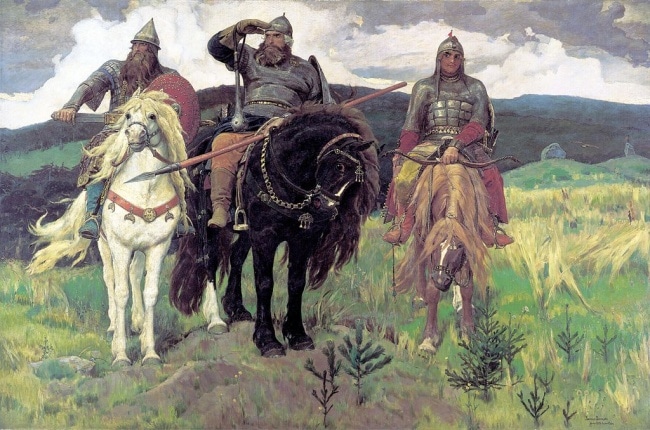
Vasnetsov worked on this painting for almost twenty years. It was finished on April 23, 1898, and soon bought by Pavel Tretyakov for his gallery.
In Russian epics, Dobrynya and Alyosha (two of the three famous fairytale “bogatyrs,” or knights) are young, but for some reason Vasnetsov portrayed Dobrynya as a grown man with a lush beard. Some researchers think that Dobrynya’s features resemble those of the artist himself. The prototype for Ilya Muromets (the third bogatyr) was a peasant from the Vladimir Province, Ivan Petrov, whom Vasnetsov had rendered before in one of his studies.
It’s worth mentioning that Ilya Muromets is not a fairy-tale character, but a historical figure. The story of his life and feats of arms describe real events. When he grew old and finished toiling to protect his homeland, he became a monk of the Kiev-Pechersk Monastery, where he died in 1188.
Bathing of a Red Horse
by Kuzma Petrov-Vodkin
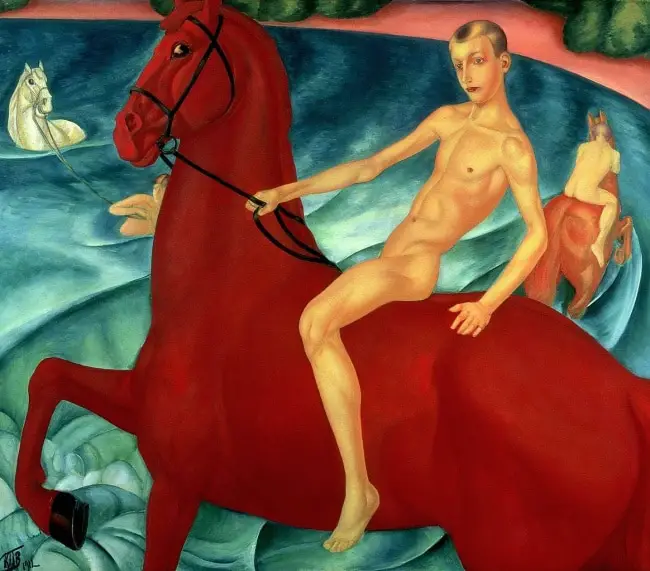
The painting Bathing of a Red Horse, which amazed contemporaries with its monumentality and significance, brought artist Kuzma Petrov-Vodkin world fame. The Red Horse stands for the Fate of Russia, which the fragile, young rider cannot rein in. According to another interpretation, the Red Horse is Russia itself. In this case, it is impossible not to note the artist’s prophetic gift: in this painting he symbolically predicted the “red” fate of Russia in the 20th century.
Petrov-Vodkin painted the horse from a real stallion named “Boy.” For the image of the youth sitting astride the horse, the artist used the features of his pupil, the artist Sergey Kalmykov: “For the information of my future biographers. My dear Kuzma Sergeevich painted me on the red horse… I was the model forthe languid youth in the painting.”
The Swan Princess
by Mikhail Vrubel

This work was painted in 1900 based on the stage version of the heroine of Rimsky-Korsakov’s opera The Tale of Tsar Saltan, from the fairy-tale of the same name by Alexander Pushkin. Vrubel designed the set of the performance, and the artist’s wife, Nadezhda Zabela-Vrubel, played the part of the Swan Princess. “Most singers sing like birds, but Nadya sings like a human being!” Vrubel said of her.
New Tretyakov Gallery: A Focus on Modern Russian Art
The New Tretyakov Gallery in Moscow offers an impressive collection of 20th-century and contemporary Russian art. This gallery offers a fascinating journey through the avant-garde, socialist realism, and modern art movements, featuring iconic works by artists like Wassily Kandinsky, Kazimir Malevich, and Marc Chagall. The gallery’s dynamic exhibitions and innovative installations provide a captivating glimpse into the evolution of Russian art in the modern era, making it a must-visit destination for art enthusiasts and cultural explorers alike. Read more about it here.
You Might Also Like
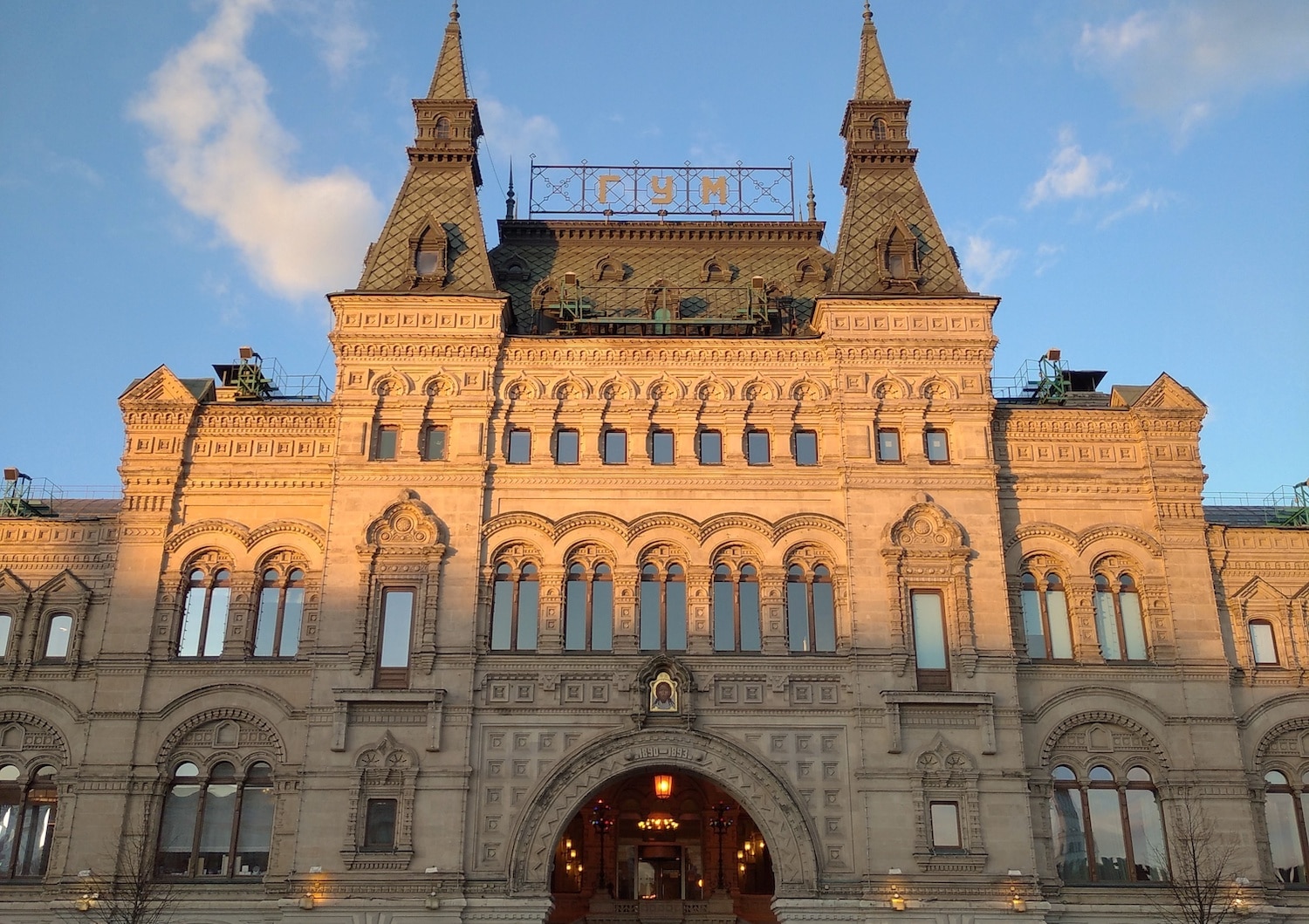
Moscow’s GUM Shopping Center: Shopping and Exhibitions
An elaborate shopping mall just off Red Square and opposite the Kremlin, Moscow’s GUM (ГУМ – pronounced “Goom”) has been among the foremost shopping centers in Russia for all of its more than century-long existence. While GUM today is synonymous with high-end designer brand shopping, this wasn’t always the case. Moscow’s landmark shopping center had […]

Sampling the Performance Arts in Moscow
Moscow is a globally recognized center for the performing arts. The city hosts multiple venues for opera, ballet, music, and drama—so many, in fact, that choosing from them can be difficult. Also, many students from small towns may not have been to these types of cultural institutions before – many tend to exist primarily in […]

Vasnetsov House-Museum
Situated between rows of high-rises and block apartment buildings stands a charming wooden house that was the home of one of Russia’s most famous artists. Victor M. Vasnetsov (1848-1926) created genre, historical, and religious art. His house reflects this and most items are either inspired by or made by the artist. The small, green-and-white house is […]
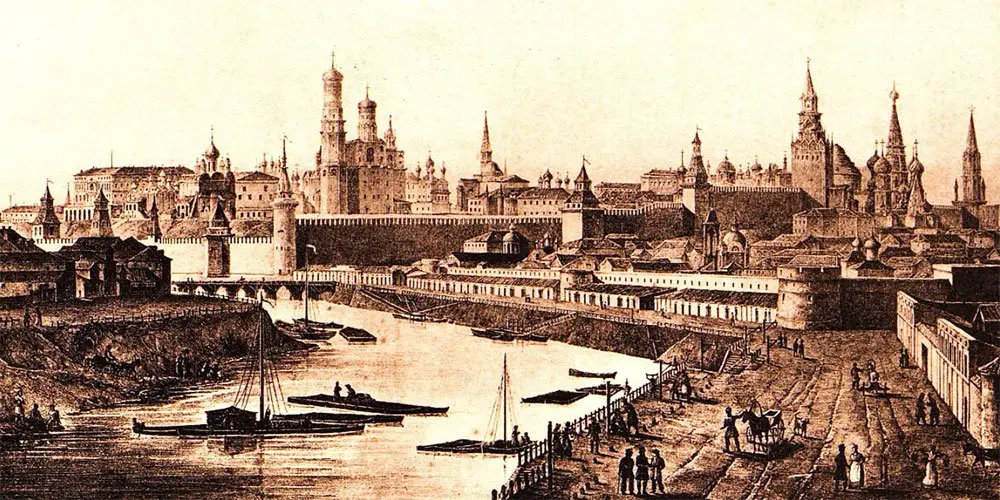
The Kremlin: Moscow’s Historical Heart Through the Ages
The Moscow Kremlin has long been the main symbol of Moscow and Russia – and for good reason. It was with the Kremlin that city of Moscow officially began and from which it grew. The Prince of Moscow, ruling from the Kremlin and drawing on the growing power of his city, united and conquered the […]
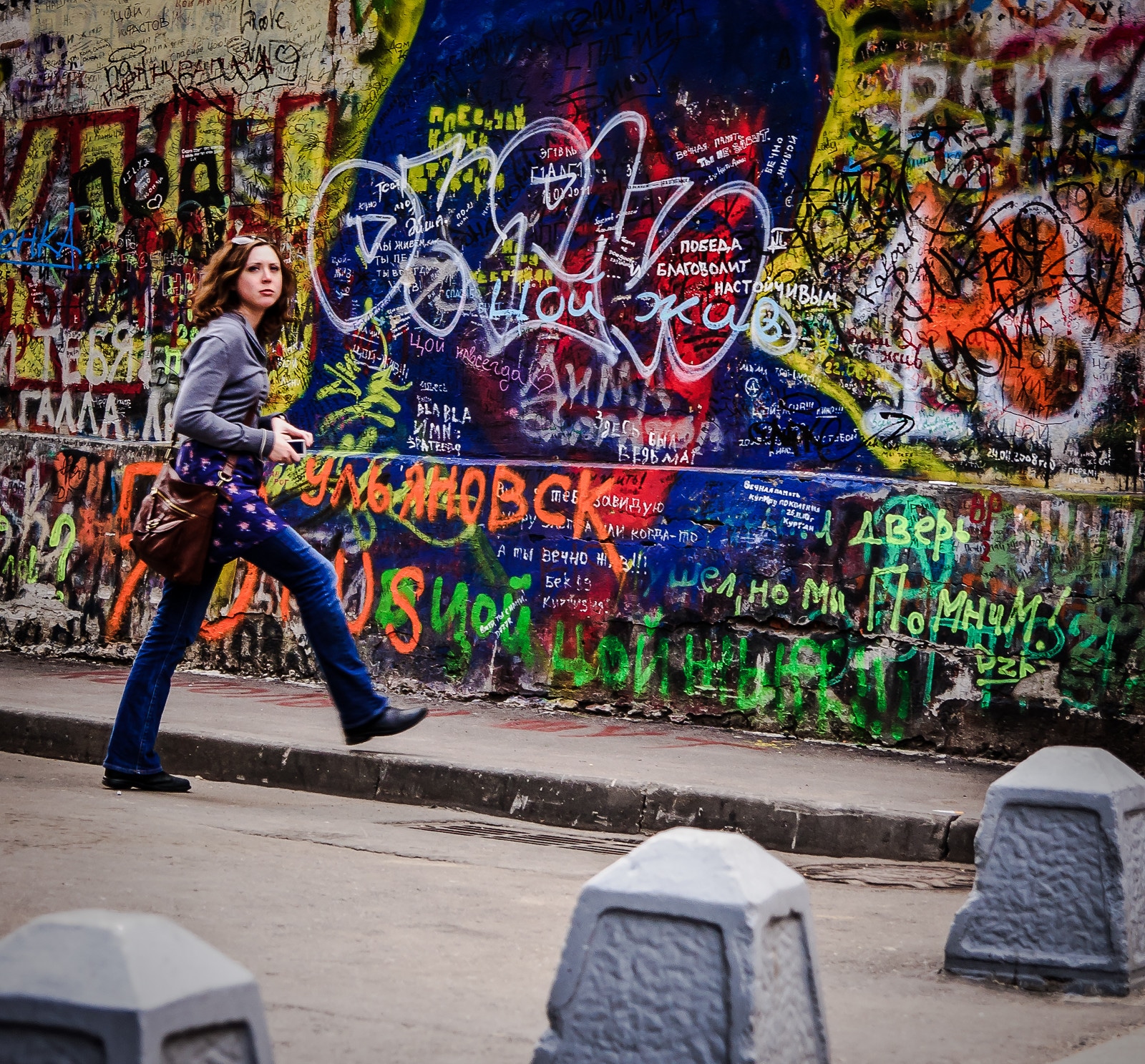
The Viktor Tsoi Graffiti Wall in Moscow
Coming across the graffiti wall at the corner of Stary Arbat and Krivoarbatskaya Lane last summer, I took a few pictures, and didn’t think about it much more than that, except that I was surprised to see such elaborate work in such a public place. So when I visited the same place, and saw that […]


